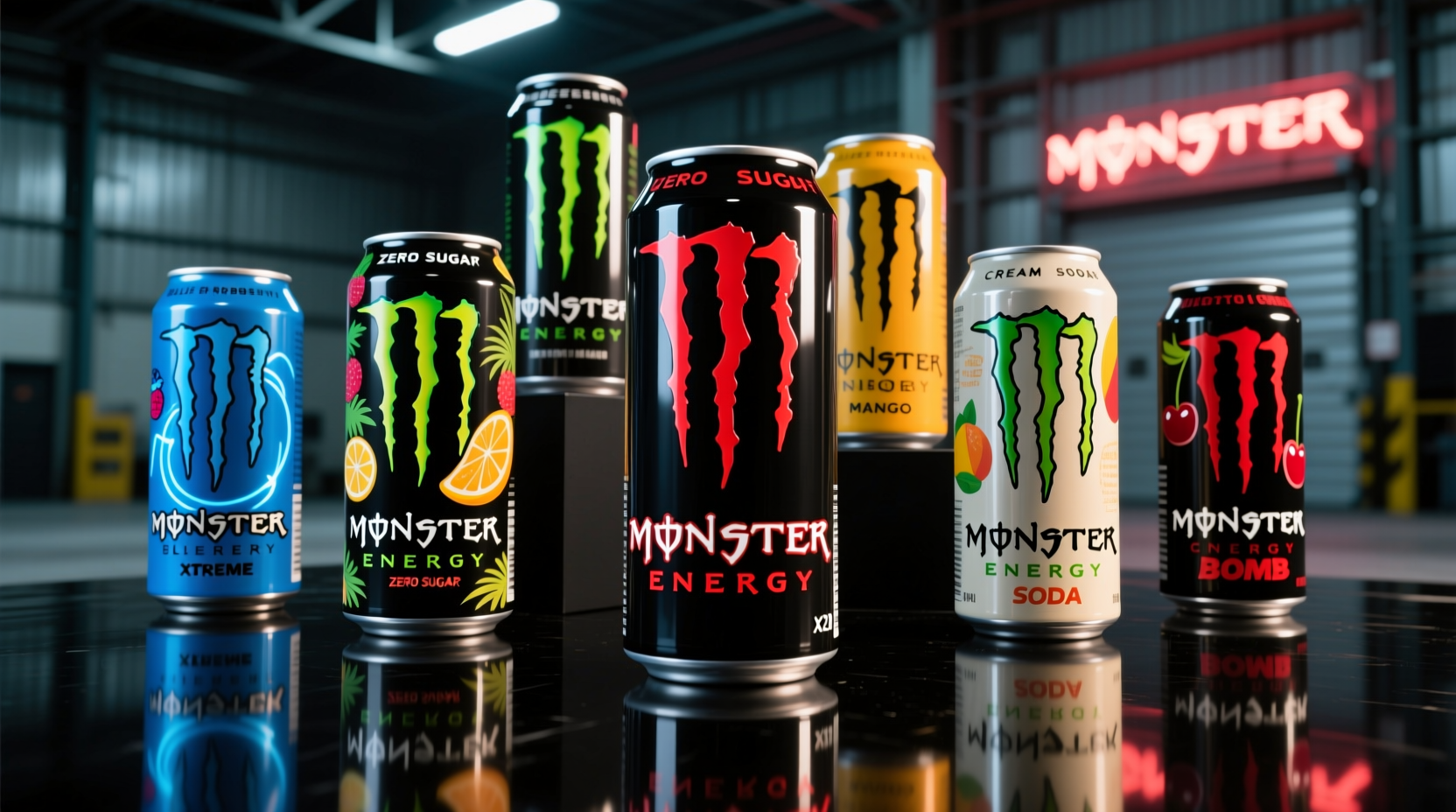Understanding exactly what Monster Energy drink tastes like requires breaking down its complex flavor profile into key components that affect your sensory experience. Whether you're considering trying Monster for the first time or curious how different varieties compare, this guide provides an accurate, detailed analysis based on sensory evaluation principles.
Breaking Down the Original Monster Energy Flavor Profile
The signature Monster Energy drink offers a multi-layered taste experience that begins with an immediate burst of citrus sweetness followed by subtle herbal notes. Unlike many soft drinks, Monster contains taurine, B-vitamins, and caffeine which contribute to its distinctive aftertaste.
Food scientists categorize Monster's flavor profile as "citrus-forward with herbal complexity." The dominant notes come from:
- Top notes: Bright orange and lemon flavors that hit your palate first
- Middle notes: Subtle herbal elements from ingredients like ginseng and guarana
- Base notes: Sweetness from sugar (or artificial sweeteners in zero-sugar versions) with a slight metallic tang
When evaluating how Monster Energy tastes compared to other energy drinks, sensory analysts note its higher citrus concentration than Red Bull but less herbal intensity than Rockstar. The carbonation level sits at approximately 3.5 volumes of CO2, creating a noticeably fizzy mouthfeel without being overwhelming.

How Temperature Affects Monster's Taste Experience
One critical factor many consumers overlook is how serving temperature dramatically impacts what Monster Energy tastes like. Food chemistry research shows that:
- Chilled (34-40°F/1-4°C): Masks some sweetness, enhances carbonation sensation, reduces metallic aftertaste
- Room temperature: Amplifies sweetness, makes herbal notes more pronounced, increases perception of artificial flavors
- Over-chilled (below 32°F/0°C): Diminishes flavor complexity, creates unpleasant icy mouthfeel
This temperature sensitivity explains why many first-time drinkers report a "medicinal" taste when consuming warm Monster, while chilled versions deliver a more refreshing experience. The USDA's sensory evaluation guidelines recommend serving carbonated beverages between 36-40°F for optimal flavor perception.
Monster Energy Flavor Variations Compared
| Flavor Variant | Sweetness Level | Primary Flavor Notes | Distinctive Characteristics |
|---|---|---|---|
| Original | High (54g sugar) | Orange, lemon, herbal | Classic energy drink tang, moderate carbonation |
| Zero Sugar | None | Berry, citrus | Artificial sweetener aftertaste, less complex |
| Reserve (Mango Loco) | Moderate | Mango, tropical | Thicker mouthfeel, less carbonation |
| Ultra Series (White) | Low | Raspberry, subtle citrus | Clean finish, minimal aftertaste |
This Monster Energy flavor comparison chart reveals why consumers often prefer specific variants for different occasions. The original formula remains the most popular globally according to Beverage Marketing Corporation data, while the Ultra series has gained traction among health-conscious consumers seeking lower sugar options.
Consumer Taste Preferences Across Demographics
Market research from Statista shows interesting patterns in how different groups perceive Monster Energy drink taste. A 2023 survey of 5,000 energy drink consumers revealed:
- 18-24 year olds prefer the original Monster's bold sweetness (68% approval)
- 25-34 year olds show higher acceptance of Zero Sugar variants (52% approval)
- First-time users often describe the taste as "too sweet" or "medicinal"
- Regular consumers develop taste preference within 2-3 servings
This Monster Energy taste perception data demonstrates how acquired taste plays a significant role in consumer acceptance. The distinctive flavor profile that initially surprises newcomers often becomes preferred by regular users who associate the taste with increased alertness.
How Monster's Formula Has Evolved Since 2002
Understanding what Monster Energy tastes like today requires context about its flavor evolution. The brand's recipe timeline shows significant changes:
- 2002: Original formula launched with higher taurine content, more pronounced herbal notes
- 2008: Sugar content increased by 15% to enhance sweetness perception
- 2012: Introduction of Zero Sugar line with sucralose-based sweetening
- 2017: Flavor profile refinement to reduce metallic aftertaste
- 2021: Current formula balances sweetness with more natural citrus flavors
This Monster Energy flavor timeline explains why long-time consumers might notice subtle differences in taste compared to earlier versions. The current formulation represents Monster's attempt to create a more universally appealing taste while maintaining its distinctive energy drink character.
Practical Tips for First-Time Monster Energy Drinkers
If you're wondering what Monster Energy tastes like before trying it, these practical suggestions will help manage expectations:
- Always serve chilled (never at room temperature)
- Take small sips initially to acclimate your palate
- Consider starting with Ultra Zero Sugar if you dislike overly sweet beverages
- Avoid drinking on an empty stomach to minimize flavor intensity
- Rinse with water afterward to neutralize the aftertaste
Professional tasters recommend cleansing your palate with a plain cracker before sampling Monster to better appreciate its flavor nuances. This technique, used in professional sensory evaluation, helps reset your taste buds between samples when comparing different energy drink varieties.
How Monster Compares to Other Major Energy Drinks
When evaluating what Monster Energy tastes like compared to competitors, consider these key distinctions:
- vs Red Bull: Monster has stronger citrus notes, less herbal complexity, and higher carbonation
- vs Rockstar: Monster is less sweet with more prominent orange flavor
- vs Bang: Monster has more traditional soft drink characteristics, less artificial aftertaste
- vs Reign: Monster offers more balanced sweetness without Reign's intense flavor concentration
Food scientists at the Institute of Food Technologists note that Monster occupies a middle ground in the energy drink flavor spectrum—sweeter than Reign but less medicinal than some Rockstar varieties. This positioning explains its broad market appeal across diverse consumer groups.
Final Thoughts on Monster Energy's Taste Profile
The distinctive taste of Monster Energy represents a carefully engineered balance of sweetness, citrus, and functional ingredients. While personal taste preferences vary significantly, understanding the specific flavor components helps set appropriate expectations. Whether you're seeking the original Monster Energy taste experience or exploring their expanding flavor portfolio, recognizing these sensory elements enhances your enjoyment and helps you select varieties matching your palate.











 浙公网安备
33010002000092号
浙公网安备
33010002000092号 浙B2-20120091-4
浙B2-20120091-4